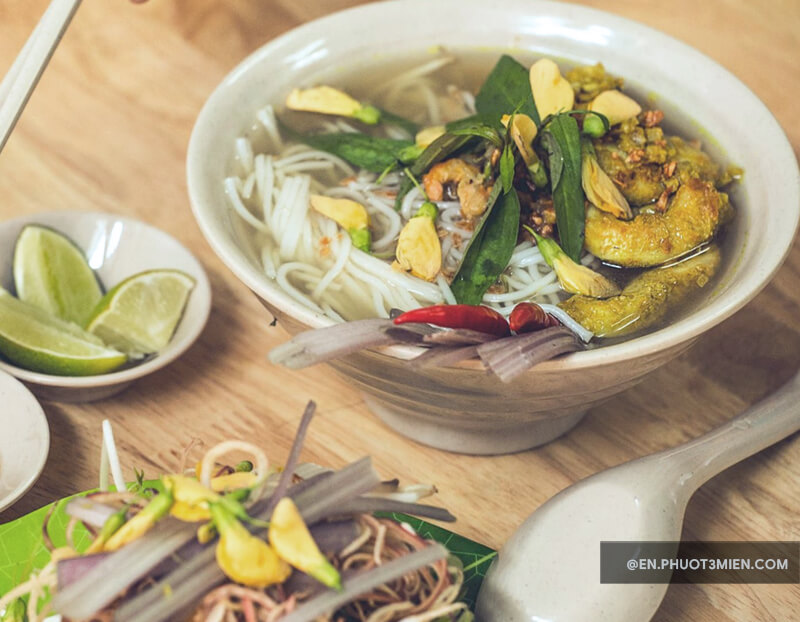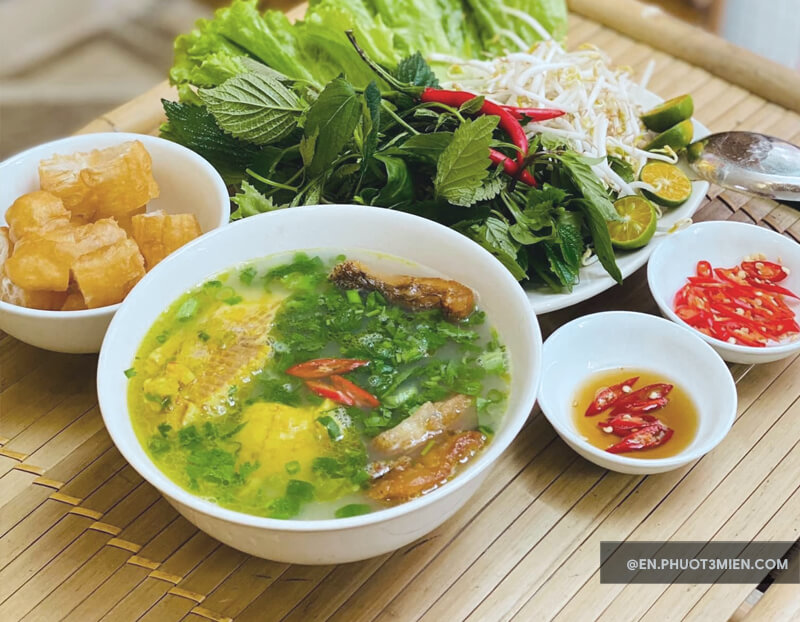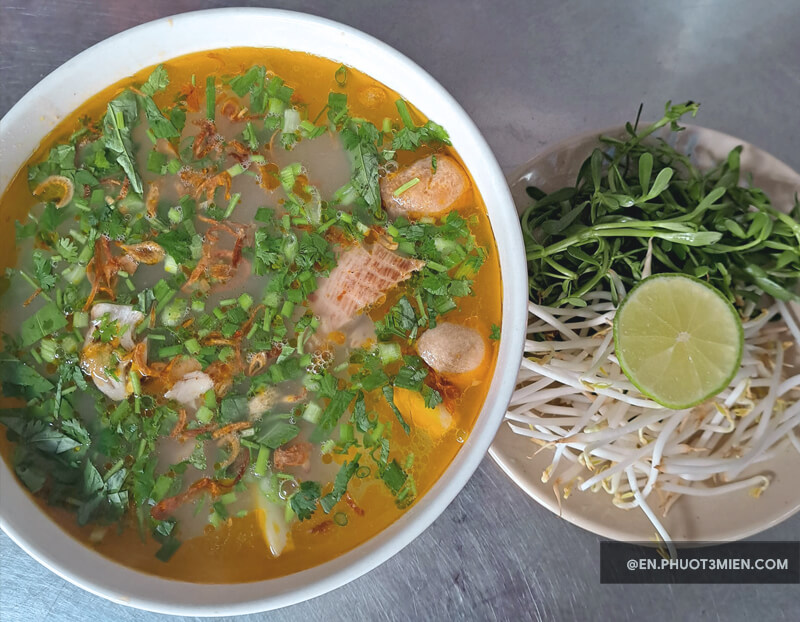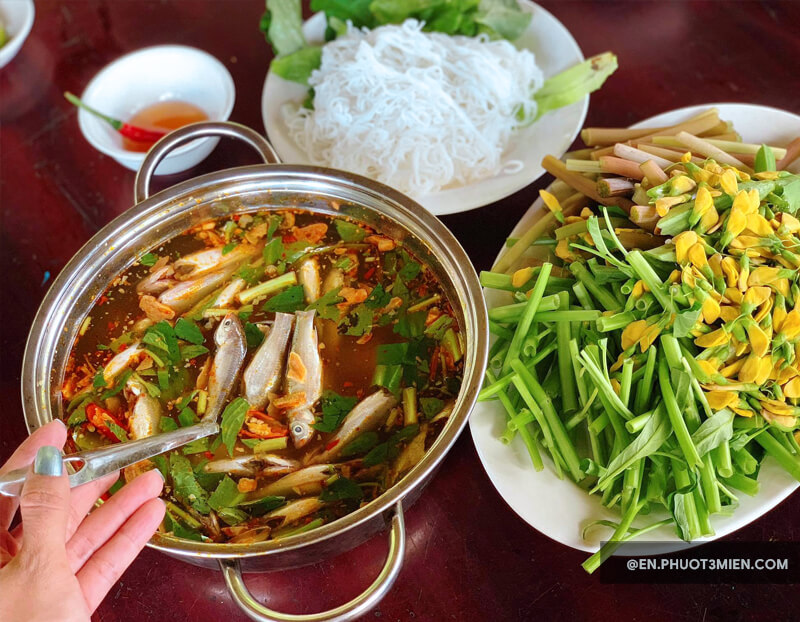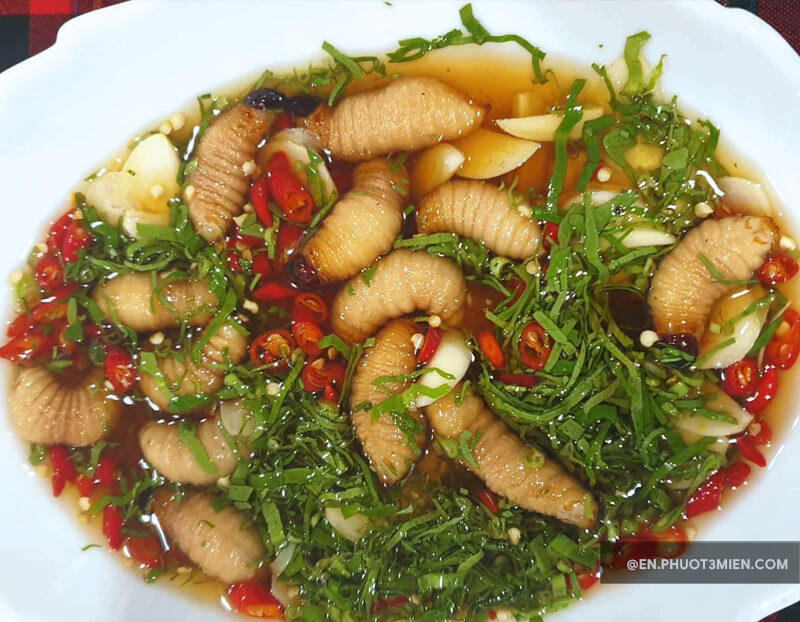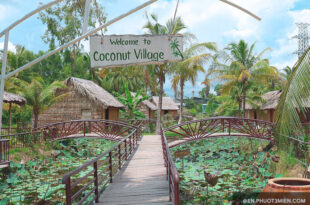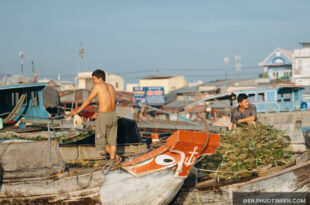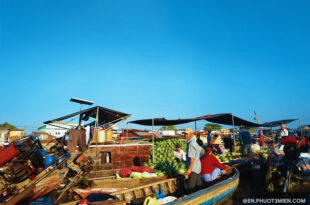In addition to the tropical climate found here, the Mekong Delta gives the area unique landscapes, particularly charming characteristics, and a special floating lifestyle of the people. Pay a visit to the Mekong Delta in Vietnam and it’ll be a unique experience.
Starting from Tibetan Plateau, the Mekong River runs through China’s Yunnan province, Myanmar, Laos, Thailand, Cambodia, and Vietnam before it goes all the way to the South China Sea. The river brings life to any location it passes through, and it is such a favor from Mother Nature for Vietnam that by the time it reached our territory, it separated off into nine smaller branches. In addition to the tropical climate found here, the Mekong Delta gives the area unique landscapes, particularly charming characteristics, and a special floating lifestyle of the people. Pay a visit to the Mekong Delta in Vietnam and it’ll be a unique experience.
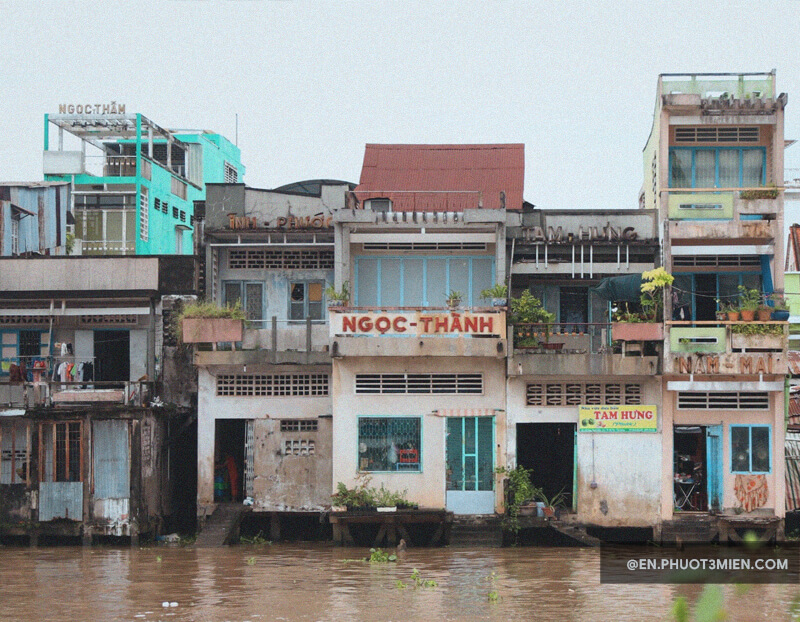
Mekong Delta, or the so-called Western region of Vietnam, is a large area which is comprised of 13 provinces – each one comes with a unique beauty and charm. It will be unfair if I just recommend one or two places in the region and leave out the others, so in this article you will find what you can experience in the delta (see, do and eat), how to do it right (best time to visit and how to get there), and I will provide you with two ideal itineraries to experience the Mekong delta for one or two days. In short, it will be a complete guide for you to experience all that the Mekong Delta has to offer in Vietnam, so read on.
Contents
- Facts About the Mekong River & Delta
- What Can You Do in the Mekong Delta?
- A. Experience the Floating Life
- B. Eat Mekong Delta Specialties
- 1. Fish Noodle Soup – Bun Ca
- 2. Snakehead Fish Thick-noodle Soup – Banh canh ca loc
- 3. Sa Dec or My Tho Noodle Soup – Hu tieu Sa Dec/ My Tho
- 4. Vietnamese Pancake – Banh xeo
- 5. Salted Fish Hot Pot – Lau mam
- 6. Mud Roasted Chicken in the Mekong Delta
- 7. Snakehead Fish Rice Porridge (congee) – Chao ca loc
- 8. Mud Carp Fish Hot Pot with Sesban Flower – Lau ca linh bong dien dien
- 9. Durian Cake – Banh pia
- 10. Rat Meat – Thit chuot
- 11. Coconut Worm – Duong dua
- C. See Some Sights
- D. Bird Watching
- E. Swim in the Swamps
- F. Net Fishing in the Mekong Delta
- Mekong Delta – How to Do it Right
- Ideal Itineraries for your Mekong Delta Trip
Facts About the Mekong River & Delta
The Mekong River is the 12th longest river in the world and the seventh longest in Asia. It runs through six countries in total (China, Laos, Myanmar, Thailand, Cambodia, and Vietnam) and locals of different countries have given it different names that mean various things. The Vietnamese call it the Nine Dragons River (Song Cuu Long) due to the separation of the river into nine arms. Nine dragons to the Vietnamese mean nine rivers. However, there are only seven river branches left nowadays as one branch was blocked off by human intervention since it had some negative effects on the life of people there. The other river was blocked off naturally.
Since the very beginning, the Khmer people settled right next to the border between Cambodia and Vietnam. Later on, through emigration during the invasion and the wars, the land welcomed the Kinh community (Viet people) and Chinese. Now, it is a mix of three different communities, but Khmer’s culture still has a strong effect on life here.
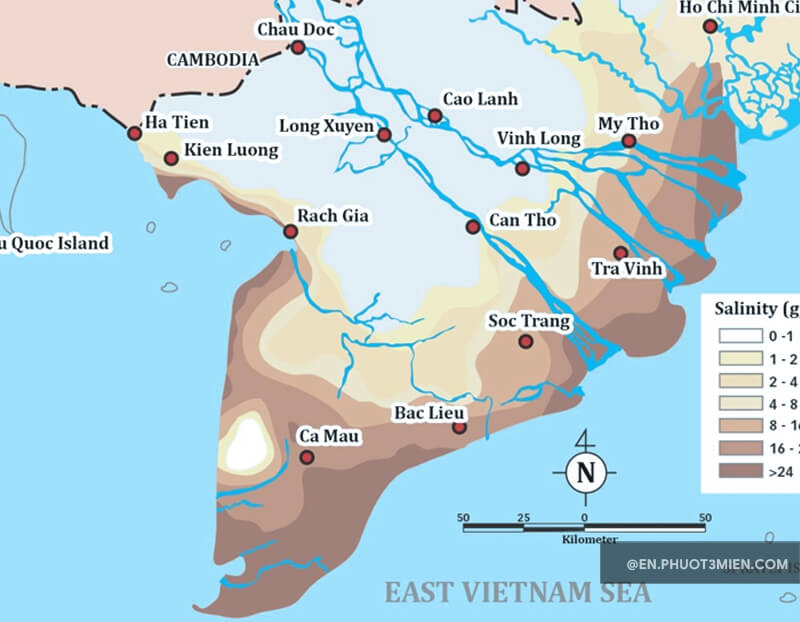
Many animals live in the Mekong Delta. The river has since given prosperity to this land and has made it a kingdom of birds, crocodiles, and amazing biodiversity. Not only that, but this area of the country is also the main supplier of tropical fruits (70%) and also is the major producer and exporter of rice (60%) of the country. Local residents have adapted to such an amount of water by innovating floating houses and floating markets. Try to picture it! A small village with all the necessities floating atop a river. Because of this floating lifestyle, the Mekong Delta in Vietnam has intrigued not only foreigners but also local travelers who want to explore this interesting way of life.

Traveling is not only about the places you go to but also about the people you meet and the cultures you experience. Choosing to visit the Mekong Delta means you’re giving yourself a chance to experience the authentic lives of locals that depend on the river to make a living. And believe me, people on this land are special. They are so friendly and won’t hesitate to help you with directions if you need, or even welcome you to their home for a lunch or the night – all without asking for anything in return. They are not competitive – they are happy with the life they are living even though it isn’t that easy. The Mekong Delta will welcome you with peace and an escape from cars, the traffic noise, and incessant honking of motorbikes you find in our major cities.
What Can You Do in the Mekong Delta?
A. Experience the Floating Life
I’ll repeat myself, your trip to the Mekong Delta won’t be complete if you don’t sit down on a narrow boat (called a ‘sampan’) and paddle your way down the river under fronds of palm trees, while making numerous stops along the river at homes of those selling dried fruits or candy.
Life here is much lived by or near the water. Houses are built on stilts in order to withstand the floods that happen regularly, ferries can carry people, vehicles, and food, markets are not held on land but on boats and instead of walking from stall to stall, you will paddle your way through the river or walk on planks balanced between two boats to buy food. It is pretty easy to find a boat to help you explore the area once you arrive at one of the provinces in the region.
Life here is much lived by or near the water.
– This map shows where you can find piers to board boats, and also the six floating markets you should visit in the Mekong Delta –
Floating markets are part of local life which explains why there are many of them. Below is a list of the six best floating markets in the Mekong Delta for you to consider:
- Cai Rang floating market, Can Tho Province
- Cai Be floating market, Tien Giang Province
- Phong Dien floating market, Can Tho Province
- Nga Bay floating market, Hau Giang Province
- Nga Nam floating market, Soc Trang Province
- Tran On floating market, Vinh Long Province
These floating markets open early in the morning (3 AM – 4 AM) and become busy around 5 AM – 6 AM since people will work on farms or paddle fields during the day. Make sure you wake up early enough to catch these.
B. Eat Mekong Delta Specialties
What should you eat in the Mekong Delta? It is so hard to answer this question because there are so many delicacies, but let me try. Providing 70% of the fruit consumed throughout Vietnam, where else in the country can satisfy your fruit craving other than the Mekong Delta? There are a dozen different kinds of tropical fruits that are grown here so it’s a bit impractical to list them all but here are a few: pomelo, orange, coconut, water coconut, mango, star apple, pineapple, longan fruit, rambutan, jackfruit, mangosteen, soursop, plum, banana, dragon fruit, and durian. Now I feel out of breath. By the way, you can even eat these fresh from the tree if you pay a visit to a local orchard.

The locals are also very resourceful – coming up with different ways of incorporating these delicious fruits into dishes. For example, banana can be eaten fresh, or grilled, or covered with sticky rice then grilled and draped with coconut milk. Coconut can be eaten fresh, blended as a smoothie, or processed to become dried coconut candy. If you think you can survive on fruit for the rest of your life, you should move and stay here.
Another highlight of the Western region is its cuisine. As mentioned above, people here are very good at inventing new dishes using their wide array of fruits available. Some of them are just unforgettably delightful, and some of them will require a bit of time and bravery to get used to.
1. Fish Noodle Soup – Bun Ca
This noodle soup is a mixture of thin noodles, green herbs, fish caught from the Mekong river and soup cooked using fish bones. This is a very common dish in the area and people often have it for breakfast.
2. Snakehead Fish Thick-noodle Soup – Banh canh ca loc
Different from the thin noodle soup above, this kind of soup includes a fatty version of noodles made from rice flour or tapioca flour. The soup is thick and cooked with snakehead fish meat. You can easily find this in the area and it is the favorite meal of the locals.
3. Sa Dec or My Tho Noodle Soup – Hu tieu Sa Dec/ My Tho
Hu tieu is a type of noodle that is very familiar to foodies. However, there are different ways to make it and those different methods reflect the different areas of the country
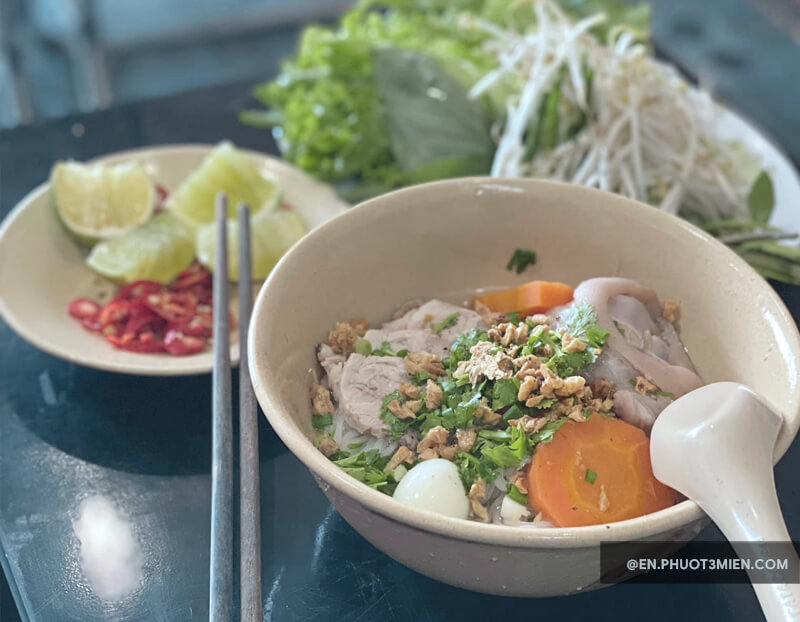
Hu tieu My Tho bowl is like a painting full of attractive colors with red shrimp, green celery, chrysanthemum, and red peppers. A very important spice creating the unique aroma of the dish is the minced garlic.
Although full of familiar ingredients such as shrimp, meat, and liver, hu tieu Sa Dec has its own distinction which helps it to stand out from hu tieu My Tho and hu tieu Nam Vang. If hu tieu Nam Vang noodles are white, small and soft, the noodles of hu tieu Sa Dec are big, slightly crunchy and chewy with a milky color.
“The easiest taste to recognize is the clear, sweet broth combining with other ingredients to create a perfect symphony of flavors. Added scallions and cilantro,you cannot resist the allure of such an amazing dish from the western land.”
This quote was taken from Vinh Nguyen’s article about Everything You Need to Know about Hu Tieu in Saigon.
4. Vietnamese Pancake – Banh xeo
For those who don’t know, the Western region is the hometown of banh xeo, the famous Vietnamese pancake. Everyone loves it.
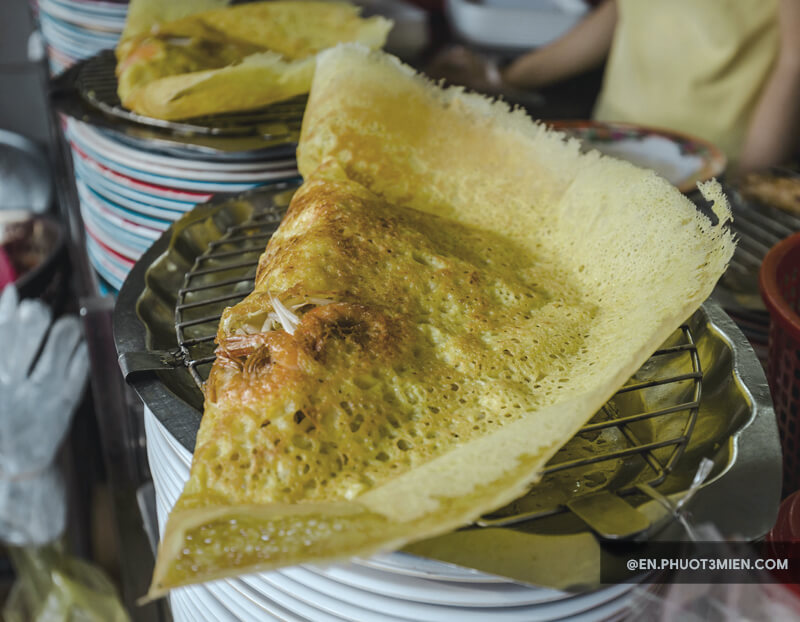
Read more: Where to Find the Best Banh Xeo in Saigon
5. Salted Fish Hot Pot – Lau mam
The hotpot is made from salted fish (mud carp fish and snakeskin gourami fish) cooked with coconut water or bone broth. Then shrimp, meatballs, blood cake, squid, and special greens (bitter veggies, bean sprout, eggplant, lemongrass, etc…) are added.
6. Mud Roasted Chicken in the Mekong Delta
The Mekong Delta has a pretty unique culinary culture as shown above. Delicacies like this are hard to find in other regions of Vietnam. Another example is mud roasted chicken. This dish came about from pure ingenuity. What would you do if you have a chicken to eat, but absolutely no instrument to prepare it? No pot? No gas? Well, mud roasted chicken is the solution.
The chicken is covered in mud from the rice fields. The mud should be perfectly moist – not too dry but not too wet. You need just enough slather the whole chicken. It will ultimately look like a dinosaur egg. Place this dinosaur egg under many thick layers of straw or hay, and then light it on fire. Let the chicken roast for about an hour. After this is done, the chicken is to be removed and the mud peeled off. The chicken will look absolutely delicious and taste even better. Soft, and juicy – not dry at all. Locals love to eat this with spicy chili salt mix with a few drops of lemon. Don’t miss this!
7. Snakehead Fish Rice Porridge (congee) – Chao ca loc
This is a simple dish with just two main ingredients: snakehead fish and rice porridge. It is simple but delicious and most people agree with me.
8. Mud Carp Fish Hot Pot with Sesban Flower – Lau ca linh bong dien dien
Unlike the salted fish hotpot, this hotspot is less salty, cooked with fresh mud carp fish, and the flowers of common sesban.
The color is what will attract you to the dish but it is the flavor that will make you keep coming back for more.
9. Durian Cake – Banh pia
The best durian is found in the Mekong Delta and therefore, so is the best durian cake. It doesn’t come as a surprise that most people hate the smell of durian. Fun fact – durian is banned in subways in Thailand.
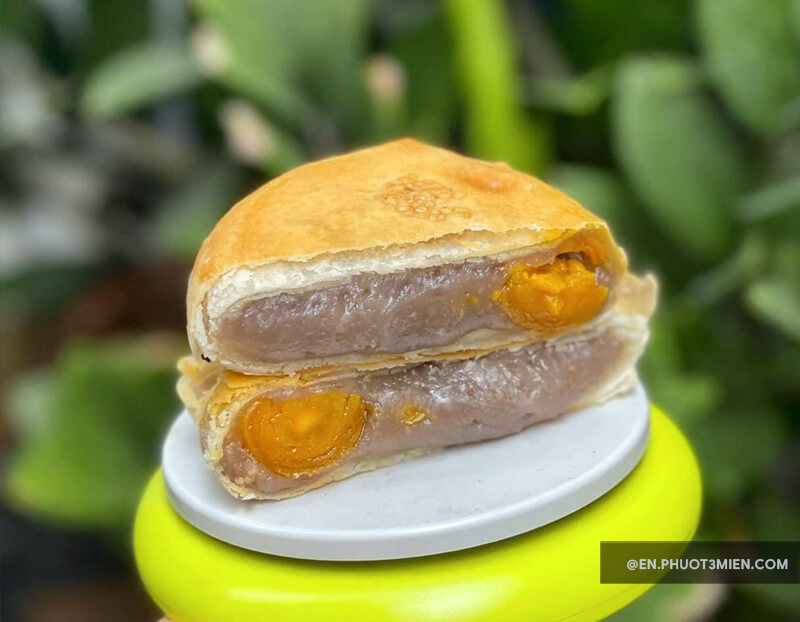
To ease yourself into enjoying the taste of this fruit, start with durian ice cream. If you are okay with this, the next step is to try durian cake.
10. Rat Meat – Thit chuot
Rats here enjoy damaging coconut trees and rice fields, so locals in return enjoy catching them to use as food. It’s a common delicacy in the Mekong Delta. There are many ways to cook rats – you can grill, steam, deep fry, or make a curry out of this small animal.
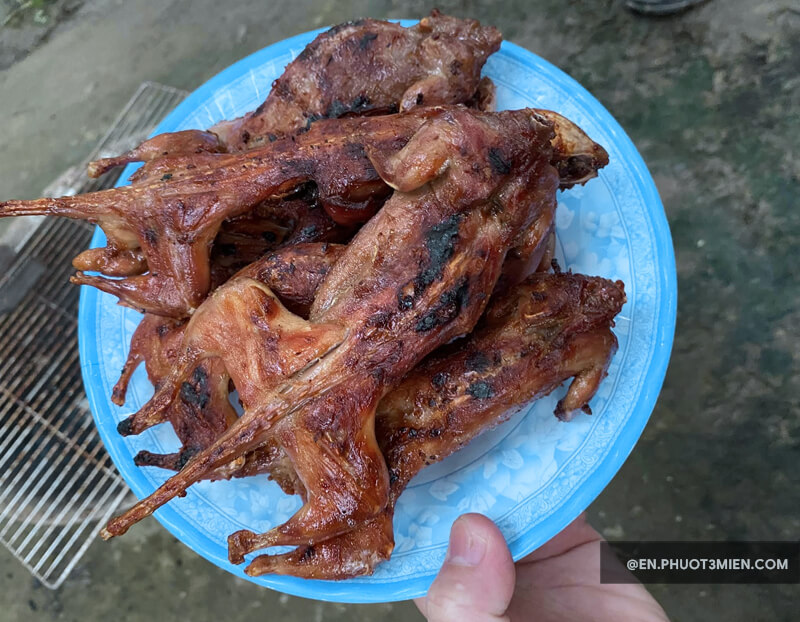
You tell me the best way to have it! That is, once you’re brave enough to try all these methods of preparation. If you’re not ready, just skip it. There are more excellent dishes on the list above for you to try. However, if you are still curious, check out this video and decide.
Link: https://youtu.be/d1_2reHmOBo
11. Coconut Worm – Duong dua
These beetle larvae pierce holes in coconut trees and lay eggs inside. The Mekong Delta, of course, will be an ideal place to find them due to the massive amount of coconut trees grown in the region. Eating the grilled larvae is the most recommendable way to enjoy this dish.
If you want something challenging, try to eat it while it’s still alive! This is not the most common way, but it is the best way. I haven’t done it but my friend, Sonny Side, ingested one in his food review show.
If you need some tips on how to stomach it, check it out: How to Eat Coconut Worms!
C. See Some Sights
Contrary to popular belief, the best way to deeply understand Vietnamese culture isn’t by sitting on Bui Vien St., downing beers and watching people stagger up and down the street. Go talk with a local, take a trip with them, or even take part in one of their daily activities. This is why I recommend that you find a local friend to go to the Mekong Delta with who can help you with communication and show you around places that are hard to find by yourself as a tourist. There are many points of interest in the Mekong Delta. Too much to list here in fact so expect another article! But, meanwhile, there are hundreds of different orchards in the area. You’ll be able to walk along the rows of dragon fruit trees and watch farmers as they collect the fruit.
These are six of the most famous temples in the Mekong Delta for your reference:
- Vinh Trang temple, Tien Giang Province
- Truc Lam Phuong Nam Temple, Can Tho Province
- Doi temple (Bat temple), Soc Trang Province
- Kh’leang temple, Soc Trang Province
- Khmer Pothisomron temple, Can Tho Province
- Phat Lon temple (Giant Budha temple), An Giang Province

Another fun activity to do here is to sit on a xe loi (motorbike cart) and explore the area. Since the streets here are so narrow that cars cannot fit, xe loi’s are the main transport here. Taking one and riding through the maze of lanes and narrow walkways while keeping your head safe from the low hanging branches is an absolutely fun experience. Southern Folk Songs (Don ca tai tu) will be an inspiring activity for you. This special type of Vietnamese music is an art that reflects the local life of the Southerners. Through song, locals will tell you their story, their thoughts, and emotions. You will find yourselves instantly drawn in, calmed, and recharged after wallowing in the soothing sound of their music.
D. Bird Watching
The Mekong Delta is known as the Kingdom of Birds in Vietnam. If you travel here, try not to miss the chance to pay a visit to Tram Chim – the best place in Vietnam for bird watching. Located in Dong Thap province, the best time to visit Tram Chim is in March or April.
E. Swim in the Swamps
Swamps are fun, more fun than pools. Swimming in a swamp has been one of the wildest and most fun experiences I have ever had. Even though I was born and grew up in the countryside with a river just a few steps beside my home, I had never done anything like this before. Don’t feel shy or grossed out – it is a common thing to do in this area, children to older people enjoy the activity.
From September to December, the water from upstream of the river flows to the provinces located near the border (An Giang, Dong Thap, and Long An). This washes away all the dirt and garbage left from the harvest and covers the fields with water and this will be the perfect time for everyone to enjoy their afternoon swimming in the swamps. You can also take part in the fishing activities of locals here and of course, your catches will be your dinner. If you are a nature lover, then this is for you.
Tan Chau (An Giang), Tan Hong (Dong Tap), and Tan Hung (Long An) are the three most famous places for swamp swimming. You can easily find a local to guide you and show you how to do it properly. This is an activity that’s hard to put into a tour itinerary because the water level and streams change and you have to be lucky to find a time the stream is calm and clean enough.
F. Net Fishing in the Mekong Delta
Where else can you go net fishing if not in the Mekong Delta river tributaries? The dozens of creeks and naturally formed ponds are just perfect for a round of fishing. You can either sit on the bank with your fishing rod, waiting for your lunch to get hooked on your bait – or you can get muddy! Roll your jeans up and get into the water with countless other locals doing the same.
This process uses no modern equipment at all – it is done by your hands and a net. The net is cleverly placed in the water so the fish believe it’s part of the environment and is safe to swim in and around it. Once enough fish are seen swimming around, the net is simply pulled up with the unsuspecting fish trapped inside. The fish are separated from any plants and algae that are also caught in the net. You will find other animals too – sometimes frogs, sometimes crabs and sometimes even snakes! Best to toss out the snakes somewhere else. The small fish that are not big enough to eat are thrown back into the water so they can grow up and well, be caught again later to be eaten… The edible fish are then taken to the markets or you can prepare it yourself for lunch.
Why don’t you have a go at straw roasting the fish you caught like the locals do? The fish are placed on a bed of straw and set on fire. The outside skin burns and crisps, but you scrape it off before chowing down. The insides are as delicious and fresh as can be!
Mekong Delta – How to Do it Right
1. When to Visit the Mekong Delta
The answer is all year. The weather here is pleasant for most of the year. Even when it rains, you will still see interesting aspects of local life.
If you visit the Mekong Delta around the time of the Tet holiday (Vietnamese Lunar New Year) which is around February of every year, you will be able to see how locals prepare their festivities. They decorate their homes with flowers and prepare special dishes that are found only during this time.

May to August is summer in Vietnam and this the season for many fruits to grow in the area. So this will be the best time for you to visit the fascinating orchards and try the fresh fruit.
September to November or December is the rainy season with lots of floods because the water levels of the river branches will rise. This season brings both pros and cons to the locals. Transport will be a bit difficult since they have to use boats most of the time, and they won’t be able to grow as much product with high levels of water. But the water brings a lot of seafood as well as the rich mineral soil for the next harvest.
2. How to Get to the Mekong Delta from Saigon
There are three ways to get to the Mekong Delta from Ho Chi Minh City: by bus, private car, and by motorbike. If you take the car or bus option, the driver can just drop you off in a fixed location since they can’t cross the river. But by motorbike, you can board the big ferry and carry on once you reach land again.
By Bus
This is the common way that most people choose to go to the Mekong Delta. There are plenty of bus lines in the city that go to the delta, but I’d recommend going with Phuong Trang (Futa orange bus line), a really well-known bus operator in the city providing very good service. Choose the one province that you want to get to from Ho Chi Minh City first, and then book your ticket through their website: https://futabus.vn/en-US
The website’s interface is very user-friendly so there shouldn’t be any difficulty. The price varies from 100,000 VND to 200,000 VND depending on which province you choose to visit. You can also find their stores down De Tham street and book personally.
By Private Car
This option will be suitable for those who are traveling with family or in a big group and have a pretty well laid out itinerary. The car owner will charge you based on the number of days you hire them for and also depending on the route and number of stops. The average quote for a seven-seat car is 75 USD – 80 USD a day and 90 USD – 95 USD for a minivan with 16 seats for a day. It will be slightly cheaper if you rent the car for more than two days.
You can easily find a car rental online and use the price provided for reference. But it’d be better if you can ask a local help you get one. The hotel staff or your Airbnb host will be willing to help you out.
By Motorbike
I saved the best for last. Motorbike really is the best way to see absolutely any part of Vietnam. However, if this is your first time in Vietnam and you don’t know how to drive a bike, I would not recommend this option because it is dangerous. If you are not ready for it, don’t take the risk.
There are many bike rental shops in the backpacker area like Bui Vien S.t, De Tham S.t or Pham Ngu Lao S.t. There are three common types of bikes to rent: the manual motorbike, automatic motorbike, and the motorcycle. All you need to do is just walk around and find one suitable for your budget and your needs. And then, you can hit the road.
Ideal Itineraries for your Mekong Delta Trip
To explore the Mekong Delta, you can partake in a tour or do it yourself. If you only have one or two days to do it, I recommend taking a tour from the many tour operators in Ho Chi Minh City. It’ll be easier and less stressful since they’ll arrange everything for you – from transport to food to accommodation. There are so many tour operators in the backpacker area (Bui Vien, De Tham or Pham Ngu Lao) providing tours to the Mekong Delta. You should carefully check their reviews on Tripadvisor before booking the tour to make sure you have a good time while in the delta. Some are group tours that last only a few hours, so you can’t enjoy the Mekong Delta fully. Plus, you’ll be stuck in a bus with 20 other people.
If you still want to do it yourself, below is the itinerary for your reference.
1. A One-day trip of the Mekong Delta
If you have only one day to explore the delta, there is always a way for you to do it.
7 AM: Leave your home and get on the road heading in the direction of the Mekong Delta.
Don’t forget to find something to eat to charge yourself for the day. It could be a banh mi or a bowl of pho and of course, a cup of Vietnamese coffee.
10 AM: This should be your arrival time at Ham Luong River, one of the biggest rivers of the Mekong Delta. From here, find a boat headed to Ben Tre and board it. Now it’s time to settle down and explore the different islands along the river. You will get a chance to paddle a sampan along a small canal with bushy water coconuts on both sides of the banks. Ask the boat navigator to drop you in some local places on the river bank so you can explore.
A good while into your tour, you will make a rather sweet stop. This is to visit a wonderful lady who goes by the name Tu Ha and she makes the world’s best coconut candy. Really. She is 62 years old and lives by her self deep in the maze of the Ben Tre Mekong river tributaries while doing what she loves. Her joy in life is to see tourists visiting her place and enjoying what she makes. She loves making people smile! By the way, she also makes other candy from pineapple and ginger. If you are lucky enough, she will even show you how to make the candy and let you try yourself!
You can also visit local brick factories, handicraft production factories, and rice paper production factories. There are so many home-made products like coconut candy, dried fruit candy, or specialized sticky rice wine that individuals sell.
11:30 AM: By this time you should arrive in Ben Tre. Find a local house that serves fruit and dig in.
1 PM: Lunch time!
One of the specialties in the Mekong is Gourami, also known as elephant ear fish by the locals. It is best when marinated with fish sauce and deep fried. When eating, you roll the fish in some rice paper, top it with pineapple, cucumber, and herbs such as basil and of course some bun (rice vermicelli). Then the roll is dipped into tamarind fish sauce and eaten. Voila!
3 PM: By this time you can start heading back to Ho Chi Minh City.
One day is a pretty short time for you to experience the Mekong Delta, but it can give you a basic understanding of the river people’s lives!
2. A Two-day trip of the Mekong Delta
If you stay longer than one day in the Mekong Delta, then you can fit the floating markets into your itinerary, and this is one of the most interesting experiences that you should not miss out on while visiting the Mekong Delta. The first day of your trip will be similar to the one-day itinerary, but then instead of heading back to Ho Chi Minh City at 3 PM, you will continue on from Ben Tre to Can Tho city and find accommodation there to stay for the night.
Day 1:
3 PM: Head to Can Tho city from Ben Tre. Can Tho is the “capital” of the Mekong Delta.
5 PM: Check in to your accommodation in Can Tho.
If you haven’t researched a place yet, then you should consider booking with Hau Giang hotel, Ut Hien homestay, or Nguyen Shack Homestay.
Day 2:
5:30 AM: Go early in the morning to Cai Rang floating market – the biggest floating market in the area.

Take a morning boat ride to Cai Rang and exploring the waterways. It’s a lovely time to take in some fresh air and see how the locals conduct their commerce here.
Click here for a guide to visiting Cai Rang floating market.
7 AM: Have some breakfast.
At this time of the day, the market is less crowded so it is perfect to feed your morning growl. Float past Cai Rang and head towards a smaller floating market to have breakfast. Hoi cake or fish noodle would be a good option.
11 AM: Explore around the area or even the city.
1 PM: Now it’s time to head back to avoid traffic. The way back will be a nice ride past some scenic areas. Make sure to stop on the way at a café for some nice coffee to re-energize yourself and then go home and take a much-needed nap!
3. The Many-day Trip to the Mekong Delta
The one or two-day trips are the only possible options for those who have little time or on a low budget. If you are flexible with time and have no cap on your budget, doing a trip for many days in the Mekong Delta is the best option for you as there are so many things to explore! There isn’t enough space here to mention all that you can do but I believe the above information should be enough for you to decide what activities you want to experience and which province you want to visit. And then, book a bus ticket or rent a motorbike and get on exploring!
Wonderful food, fascinating fruit, awesome landscapes and, friendly and lovely people are the memories you will take home after your trip to the Mekong Delta. If you are still looking at the computer screen and reading these lines, don’t think, just open another tab and begin planning your trip to the Mekong Delta.
Have plans to visit Phong Nha Ke Bang National Park and/or Halong Bay? Click the names for more complete in-depth guides! Visit Travel Blog Vietnam for more awesome and informative articles!
